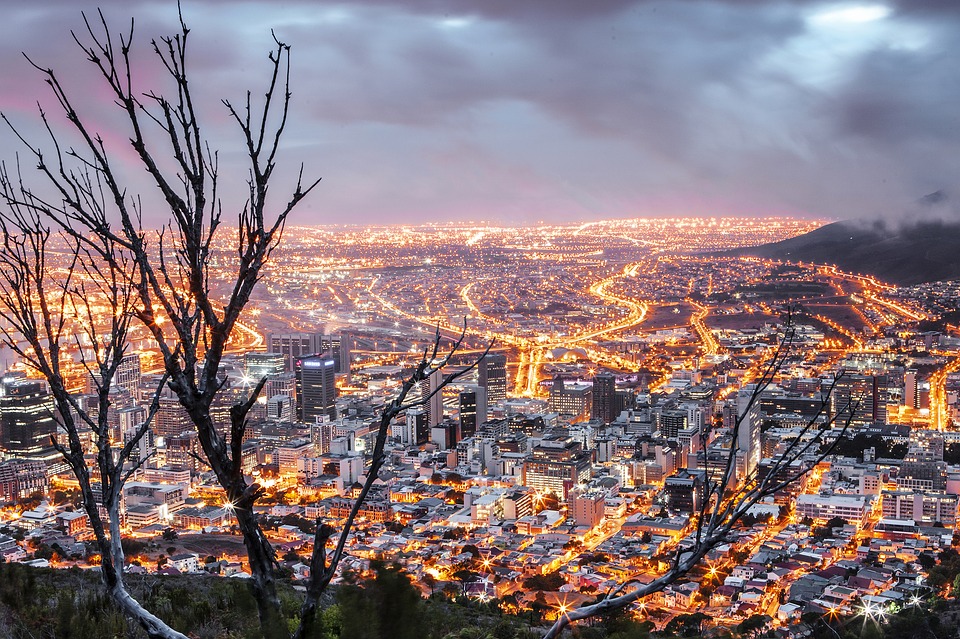Despite seeing its growth rate slump to 50% of what it was the previous year, Mozambique is clearly one of the champions of the continent with a near 4% growth rate in 2016. While nothing is perfect and much remains to be done in the Portuguese-speaking Eastern African country, markets and experts seem to appreciate the fortitude which Mozambique has shown in addressing its challenges. “The MEU reviews recent economic developments and assesses near-term economic prospects, forecasting that growth will slow further to 5.8% in 2016, before rising above 7% in 2017. The projected slowdown in 2016 reflects the continued decline in commodity prices for key Mozambican exports, effects of the ongoing drought on agricultural production, and further fiscal tightening”, according to the World bank's report.
Commodity prices are falling, a damaging trend for Mozambique which it can do little about, and yet growth remains very positive. However, this growth has come at a cost, and Mozambique faces fiscal risks, exposed to global trade slowing down and with little fiscal monitoring power. Mozambique expert Gustavo Sugahara adds : “Mozambique’s economy continues to face challenges of weaker commodity prices, lower demand amongst trading partners and rising U.S. interest rates, according to the recently-released economic analysis for the country. Amid these conditions, the report predicts growth will continue to slow this year.”
Ethiopia, on the same coast but further up North and prey to more regional instability, has shown the same combative and resilient qualities, with flagship businesses facing global competitors successfully. Tewolde Gebremariam, who runs the national airline, says : “Seventy years is a long period of time. Ethiopian has registered impressive growth over the last 70 years. I would say the last ten years have seen an exceptionally tremendous growth”. Homa Mulisa, Ethiopian journalist, wrote for All Africa : “Ethiopia has shown a dramatic increase in its economic growth. When compared to the regional average of 5.3 per cent, Ethiopia's Gross Domestic Product has grown at an average rate of 10.8 per cent per year. Besides, Ethiopia's extreme poverty line in both rural and urban areas has also declined from around 40 per cent in 2005 to less than 29 per cent in recent times”, an outstanding achievement, considering the number of instability areas around its borders.
Rwanda and Tanzania, as neighbouring countries can be grouped into a large economic development area as well, with at least a 7% growth rate. This area is all the most notable because this outstandingly high growth rate seems to be just a step in the country's ambitious future. AllAfrica reported “President John Magufuli has said his government has set a target to see the country's economy grow by 10 per cent come 2020, with the industrial sector being the major contributor.” regarding Tanzania; while New Times added “Rwanda’s economy grew by 5.2 per cent during the third quarter of 2016 with the country’s growth rate for 2016 projected to hit 6 per cent [...]The government targets to achieve 11.5 per cent growth rate per annual by 2018 to help propel Rwanda into a middle-economy status by 2020.”. There is still much room for both these economies to grow, and markets to be taken, both home and abroad. Mozambique, its southern neighbour, as seen above, makes for a solid trading partner, and its western neighbour the DR Congo, once stabilized, will make for a 70-million expansion market to fuel its long-term growth.
Ivory coast is unquestionably the most outstanding growth market on the continent, for two reasons. Its growth is dramatic, with rates close to 10% over several years. But, in addition, this growth builds on top of a previously well-developed market, unlike most of the examples hereinabove, whose growth rates benefit the “reconstruction effect”, which boosts rates once peace has returned after periods of instability or national turmoil. Ivory coast has shown remarkable resilience to the long-term political crisis which started simmering in 2002, and therefore can be further trusted as a dynamic market and a worthy investment vehicle.
Forex News published an analysis, in early 2017, stating that “Besides the investments, other boosts to Ivory Coast’s expected growth in 2017 include agriculture and mining. The country is the largest exporter of cocoa beans worldwide, and although the price of cocoa has been decreasing throughout 2016, the country still maintained excellent growth. Now, cocoa futures at the Intercontinental Exchange (ICE) shows potential growth as investors are taking long positions, and this could boost the economy even further”. In fact, Ivory Coast can be seen as the most powerful horse on Africa's growth carriage, a position it should maintain in the years to come.
Patrick Couzinet, director of Veolia Water Technology in Africa, explains that “just like supra-national economic entities helped Europe re-build after the war, African countries are reaching a high level of coordination and cooperation, through structures such as ECOWAS, maintaining regional stability, fostering growth and helping social integration. All in all, Africa is on the path to mattering more than ever in the concert of nations”.
Despite lack of basic infrastructural equipment in many areas of Africa, such as reliable electricity or water networks, Africa has achieved remarkable economic progress over the past 20 years. Poverty dropped 13% between 1990 and 2012, and Sub Saharan Africa has been driving the economic growth of the continent for over a decade, levelling at a current-day healthy 3.5%. With the few exceptions of Libya, Mali and a few other areas in the most recent years, the African continent is in a phase of relative stability. Health levels are on a steady rise, and gender-inclusive access to education has substantially increased. This will provide African markets with more steady, reliable and qualified manpower for the projects which will shape the continent in coming years.
Commodity prices are falling, a damaging trend for Mozambique which it can do little about, and yet growth remains very positive. However, this growth has come at a cost, and Mozambique faces fiscal risks, exposed to global trade slowing down and with little fiscal monitoring power. Mozambique expert Gustavo Sugahara adds : “Mozambique’s economy continues to face challenges of weaker commodity prices, lower demand amongst trading partners and rising U.S. interest rates, according to the recently-released economic analysis for the country. Amid these conditions, the report predicts growth will continue to slow this year.”
Ethiopia, on the same coast but further up North and prey to more regional instability, has shown the same combative and resilient qualities, with flagship businesses facing global competitors successfully. Tewolde Gebremariam, who runs the national airline, says : “Seventy years is a long period of time. Ethiopian has registered impressive growth over the last 70 years. I would say the last ten years have seen an exceptionally tremendous growth”. Homa Mulisa, Ethiopian journalist, wrote for All Africa : “Ethiopia has shown a dramatic increase in its economic growth. When compared to the regional average of 5.3 per cent, Ethiopia's Gross Domestic Product has grown at an average rate of 10.8 per cent per year. Besides, Ethiopia's extreme poverty line in both rural and urban areas has also declined from around 40 per cent in 2005 to less than 29 per cent in recent times”, an outstanding achievement, considering the number of instability areas around its borders.
Rwanda and Tanzania, as neighbouring countries can be grouped into a large economic development area as well, with at least a 7% growth rate. This area is all the most notable because this outstandingly high growth rate seems to be just a step in the country's ambitious future. AllAfrica reported “President John Magufuli has said his government has set a target to see the country's economy grow by 10 per cent come 2020, with the industrial sector being the major contributor.” regarding Tanzania; while New Times added “Rwanda’s economy grew by 5.2 per cent during the third quarter of 2016 with the country’s growth rate for 2016 projected to hit 6 per cent [...]The government targets to achieve 11.5 per cent growth rate per annual by 2018 to help propel Rwanda into a middle-economy status by 2020.”. There is still much room for both these economies to grow, and markets to be taken, both home and abroad. Mozambique, its southern neighbour, as seen above, makes for a solid trading partner, and its western neighbour the DR Congo, once stabilized, will make for a 70-million expansion market to fuel its long-term growth.
Ivory coast is unquestionably the most outstanding growth market on the continent, for two reasons. Its growth is dramatic, with rates close to 10% over several years. But, in addition, this growth builds on top of a previously well-developed market, unlike most of the examples hereinabove, whose growth rates benefit the “reconstruction effect”, which boosts rates once peace has returned after periods of instability or national turmoil. Ivory coast has shown remarkable resilience to the long-term political crisis which started simmering in 2002, and therefore can be further trusted as a dynamic market and a worthy investment vehicle.
Forex News published an analysis, in early 2017, stating that “Besides the investments, other boosts to Ivory Coast’s expected growth in 2017 include agriculture and mining. The country is the largest exporter of cocoa beans worldwide, and although the price of cocoa has been decreasing throughout 2016, the country still maintained excellent growth. Now, cocoa futures at the Intercontinental Exchange (ICE) shows potential growth as investors are taking long positions, and this could boost the economy even further”. In fact, Ivory Coast can be seen as the most powerful horse on Africa's growth carriage, a position it should maintain in the years to come.
Patrick Couzinet, director of Veolia Water Technology in Africa, explains that “just like supra-national economic entities helped Europe re-build after the war, African countries are reaching a high level of coordination and cooperation, through structures such as ECOWAS, maintaining regional stability, fostering growth and helping social integration. All in all, Africa is on the path to mattering more than ever in the concert of nations”.
Despite lack of basic infrastructural equipment in many areas of Africa, such as reliable electricity or water networks, Africa has achieved remarkable economic progress over the past 20 years. Poverty dropped 13% between 1990 and 2012, and Sub Saharan Africa has been driving the economic growth of the continent for over a decade, levelling at a current-day healthy 3.5%. With the few exceptions of Libya, Mali and a few other areas in the most recent years, the African continent is in a phase of relative stability. Health levels are on a steady rise, and gender-inclusive access to education has substantially increased. This will provide African markets with more steady, reliable and qualified manpower for the projects which will shape the continent in coming years.



















